
This parent guide supports parents in helping their child at home with the 2nd Grade Social Studies content.
- Subject:
- Social Studies
- Material Type:
- Curriculum
- Reference Material
- Vocabulary
- Author:
- Kelly Rawlston
- Letoria Lewis
- Date Added:
- 03/06/2023

This parent guide supports parents in helping their child at home with the 2nd Grade Social Studies content.

This resource accompanies our Rethink 2nd Grade Social Studies Civics & Government unit. It includes ideas for use, ways to support exceptional children, ways to extend learning, digital resources and tools, tips for supporting English Language Learners and students with visual and hearing impairments. There are also ideas for offline learning.

Students will learn more about a first responder or group of first responders in their community. They will then design and create a certificate to honor that individual or group.

Students are introduced to the Constitution. They learn how it came into being and how it ensures our freedom. Students look back at the rules they wrote in Unit 1 and relate those to the Constitution. They look at U.S. symbols and begin to learn about customs and celebrations.

In this lesson, students will learn about services available in our community and what would happen if these services were not functioning.

Chapter 4 is all about civics. While many teachers may be tempted to do this chapter first, it is placed here for a reason. Many of the concepts introduced in Chapters 1-3 are revisited here. Some of the content from 1st grade may serve as a great review at the start of the year.
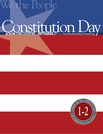
For this activity, students learn several important facts about the Constitution and its history.
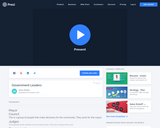
This presentation describes government leaders and their jobs.

Students learn about how public officials are selected, including election and appointment. Students also learn about and compare the roles of mayor, governor, and president along with learning who our current government leaders are.

In this lesson students are introduced to the Constitution. They learn how it came into being and how it ensures our freedom. Students look back at the rules they wrote in Unit 1 and relate those to the Constitution. They look at U.S. symbols and begin to learn about customs and celebrations.

In this lesson, students begin to define themselves as Americans.

In this lesson, students learn about how public officials are selected, including election and appointment. Students also learn about and compare the roles of mayor, governor, and president along with learning who our current government leaders are.

Students will learn about the different items which are used by firefighters and the role they play in the community.

This inquiry engages students in exploring the meaning and purpose and function of government through the compelling question "Is the president the most important person in government?" Assuming that most students know who the president is, this inquiry is designed to help students explore the different levels of governmental leadership and the idea that other authority figures exist in addition to the president. In learning about the levels of government and the issues each deals with, students should consider their own ideas for desired change within their communities (e.g. more recreational space, better roads, more variety in school lunches) and develop a commitment to civic participation.
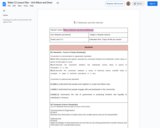
Day 1: In this lesson, students will…. Understand how information is transferred over physical or wireless paths and are broken down into smaller pieces called packets, then reassembled at their destination. They will learn this by creating a LEGO/Magnatile/block house, or building, as a team. The teacher, or facilitator, will take a photo of their creation. The students will disassemble their structure and transfer it to the next group, representing how information is broken down and passed on. The next group who receives the pieces will have to look at the photo and rebuild based on the photo. If the group completes this, they will successfully complete how information is transferred showing that in order for information to be the same when it’s transferred and to show up, it needs to be the same.
Day 2: Students will learn to protect their personal information by creating passwords/passphrases. This will be equated to students using your house key, or house code. This is private to the adults in your life. They do not share those with others, just like you would not share a password to your account with others. Teacher will create an easily guessable password to model, students will ask the teacher questions from a predetermined list of questions with picture tiles, like favorite animal, favorite color, etc. Using the answers to the questions the students will try to guess the password. Then, students will create a password, and play the guessing game with a small group.
Day 3:Students will review previous concepts about passwords and protecting personal information. They will be introduced to anti-virus software. Teacher will equate malware to getting sick and anti-virus software to antibiotics. When you’re sick your body is ‘infected’ like a computer with malware on it. The anti-biotic or anti-virus software protects you. Students illustrate a computer transmitting information (use paper and markers to solve a maze). They will be given anti-virus software (saran wrap) to place over their maze. Teacher walks around and sprays water on each “computer” with anti-virus software. Remove anti-virus software and spray again to illustrate malware.

Students learn about the roles of mayors and city officials. Lesson is found on page 15 of the PDF.

Students begin to define themselves as Americans.
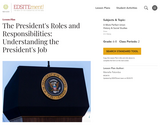
In order to become informed participants in a democracy, students must learn about the women and men who make decisions concerning their lives, their country, and the world. The President of the United States is one such leader. As a nation, we place no greater responsibility on any one individual than we do on the president. Through these lessons, students learn about the roles and responsibilities of the president and their own roles as citizens of a democracy.
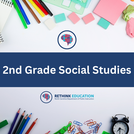
This course was created by the Rethink Education Content Development Team. This course is aligned to the NC Standards for 2nd Grade Social Studies.

Students will use three Web sites to gather data about the people in their home state and those who represent them in Congress, then use an online tool to visually compare the data.